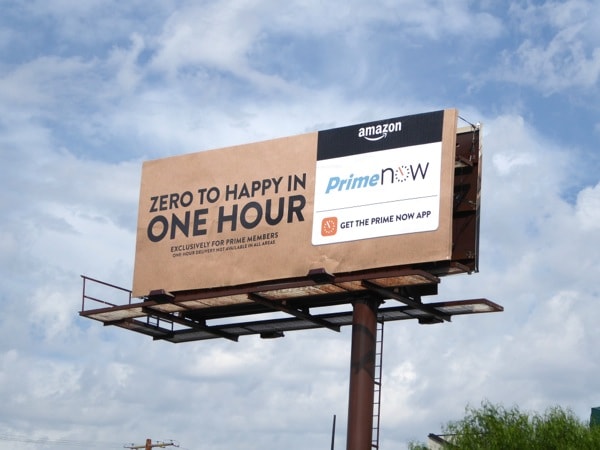
This graph shows the search interests for out of home advertising, billboard advertising and digital marketing between 2004 and 2010.
Back in 2004, OOH advertising had a much higher search volume than digital marketing. Today it is a completely different story. Digital marketing has taken off while the search interests for OOH advertising and billboard advertising have been languishing.

Out of all the marketing channels, the decline of Yellow Pages was the worst. Twenty years ago, everyone was on Yellow Pages. Business owners were there. Consumers flipped through their big yellow books to find the products and services they need.
Today Yellow Pages is gone. Go ask any 10-year old what is Yellow Pages. They wouldn’t know what it is.
How about the marketing spend?
Google’s advertising revenue in FY18 is $95 billion. That is bigger than the total advertising revenue for the US TV industry combined!

That $95 billion on advertising sales is just from Google alone. It doesn’t include advertising revenue from Facebook, Instagram, other media networks like Conversant and RadiumOne, and websites selling advertisements individually. It also doesn’t include advertising revenue from email newsletters, affiliate marketing, and other forms of online advertising.
With that said…
Will digital marketing take over OOH advertising?
My answer is no.
Here are five reasons why.
1. Organisations do not allocate all their marketing budget to one channel.
Organisations don’t allocate 100% of their marketing budget to one single marketing channel unless it is a small business. It’s the same as how you don’t put all your investments into one basket.
You don’t see Apple allocating 100% of their marketing budget to digital. They have over 500 retail stores in 25 countries.
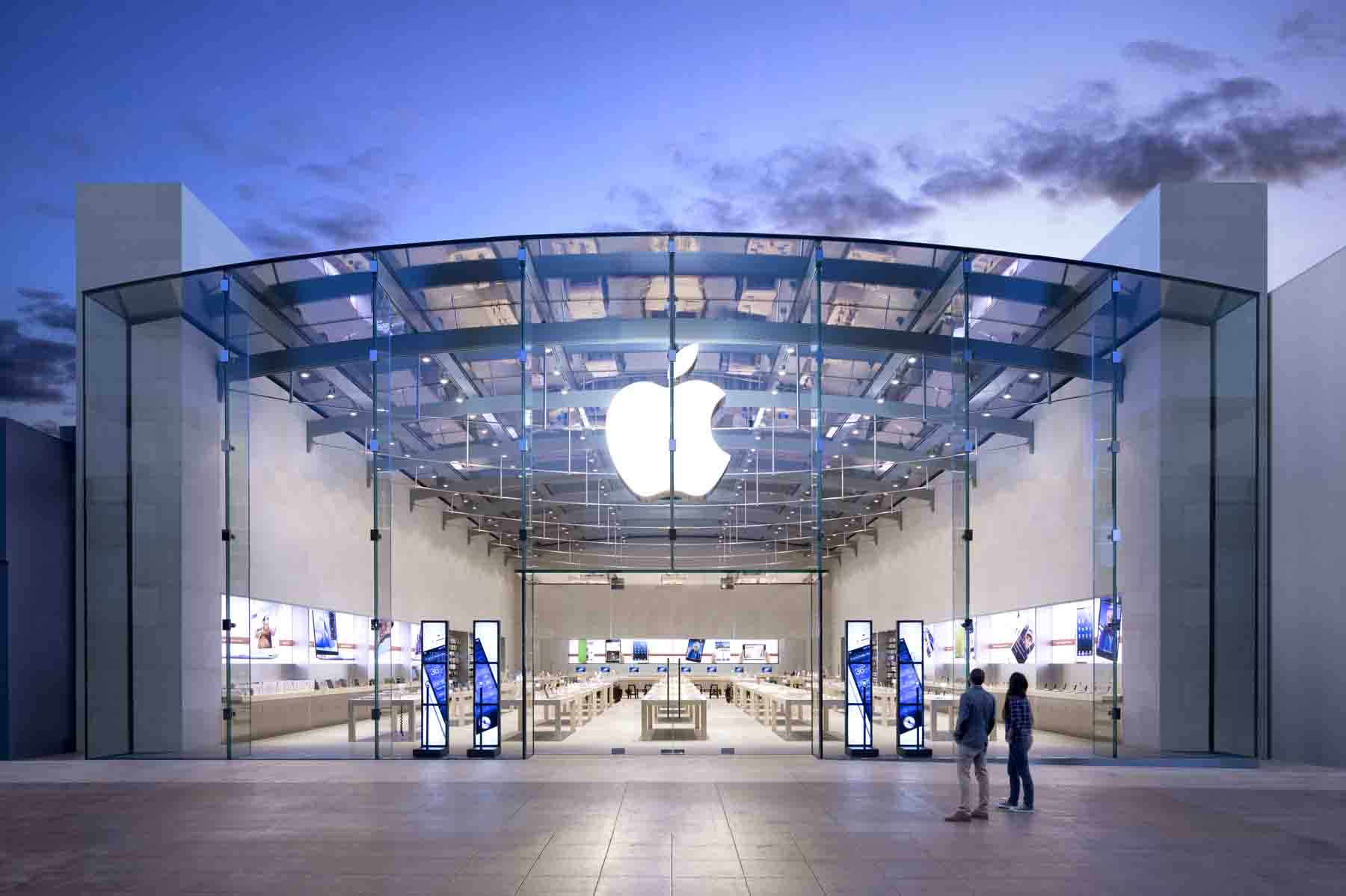
You don’t see Google allocating 100% of their marketing budget to digital. They have advertisements in channels such as billboards and TV.
![]()
One of Amazon’s billboards. Similar to Google, they also invest in TV advertisements.

2. Even with digital, you can’t reach 100% of your target audience
For example, the majority of teenagers are now on Instagram but baby boomers are still watching TV. So if you want to reach this demographic, TV is still a better bet than Instagram.
3. Different marketing channels have different levels of influence on a customer’s purchasing decision
For example, trade show is a marketing channel with one of the highest influence on a B2B’s purchasing decision. If your products and services are priced in the six-figure range, trade show is a marketing channel to consider. Don’t expect to close a six-figure B2B deal from a Facebook ad that directs to a shopping cart.
4. Different marketing channels target different levels of the customer journey
For example, someone looking to purchase a pair of shoes might browse the retailer’s website first and after they found a pair they like, walk into the store, try it and if everything is good, make the purchase.
5. Possibility for lower ROI in digital marketing spend
More advertisers = Higher CPC and CPM = Lower ROI
As more businesses and marketers move towards digital marketing, the landscape becomes more competitive. CPC starts going up. CPM starts going up. When both of those costs go up, ROI drops.
One of the biggest reasons why digital marketing has skyrocketed in the past ten years is its affordability. You can pay $0.20 for clicks in AdWords back in the days. Today, a click for that exact same search term would cost you $2. As more businesses start pouring money into digital marketing, the cost will only go up as more advertisers are competing for the same search term.
The reason for that is the advertisement cost for Google and Facebook is priced via an auction-based system. This means your advertising cost is based on what other advertisers are willing to pay.
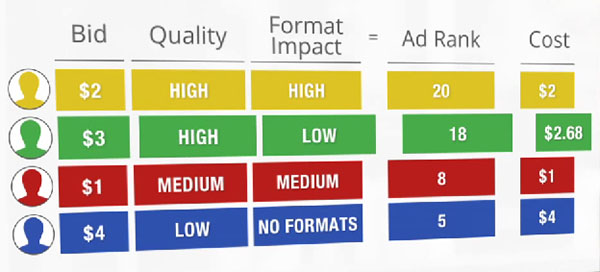
Let’s say right now you are paying $1 CPC on AdWords and you’re ranked #1. Tomorrow, a new advertiser can come in and set his/her CPC to $2 per click and that pushes you down to #2. To claim back your #1 spot, you would essentially have to increase your CPC budget to $2.01. You can watch a video on how the Adwords auction system works.
Note: This assumes all other factors remain equal such as your ad relevance, CTR, etc.
As more advertising budgets are allocated towards digital, the cost will gradually increase until the point where only the best advertisers can afford to advertise. Look at TV, there are only a few advertisers and you see the same businesses all the time. You rarely see a small business advertise on TV and that is because of the cost.
This is already happening to digital as the ones who can’t compete stop showing up.
Google in 2003

Back in 2003, you could have easily find keywords to bid on for $0.10. Today, you would have to pay 1000% more for the same search term. The average CPC today is between $1 to $2. If you are in a competitive industry like insurance, a keyword like car insurance would cost you over $30 per click.

The good news for OOH advertising
The good news for OOH advertising is as more budget is allocated towards digital, less budget goes into these “old school” channels. As fewer advertisers are advertising here, media companies would drop their cost to fill inventories.
CPM comparisons among marketing channels
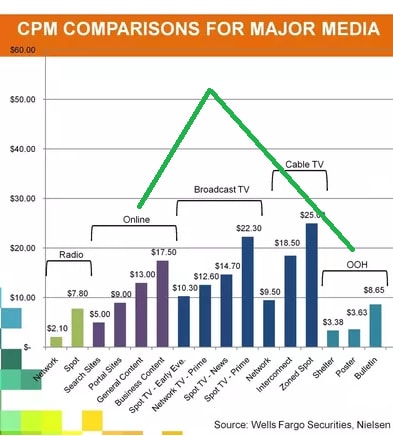
A report by Wells Fargo and Nielsen showed that the average CPM for digital ranges from $5 all the way up to $17.50. The average CPM of Facebook is $7.19. Compare that to OOH advertisements:
- Bus shelters – $3.38
- Posters- $3.63
Smart marketers who know what they are doing will capitalise on this trend and create top of funnel (ToFu) and middle of funnel (MoFu) marketing campaigns via different channels like OOH and radio to generate the most amount of brand awareness at very low CPMs and competitors won’t even know who is stealing their market share.
The rise of OOH advertising
Earlier this year, Netflix offered $300m for a billboard company in Los Angeles. Netflix has been investing in billboards for years now. Just google “Netflix billboard ads”.
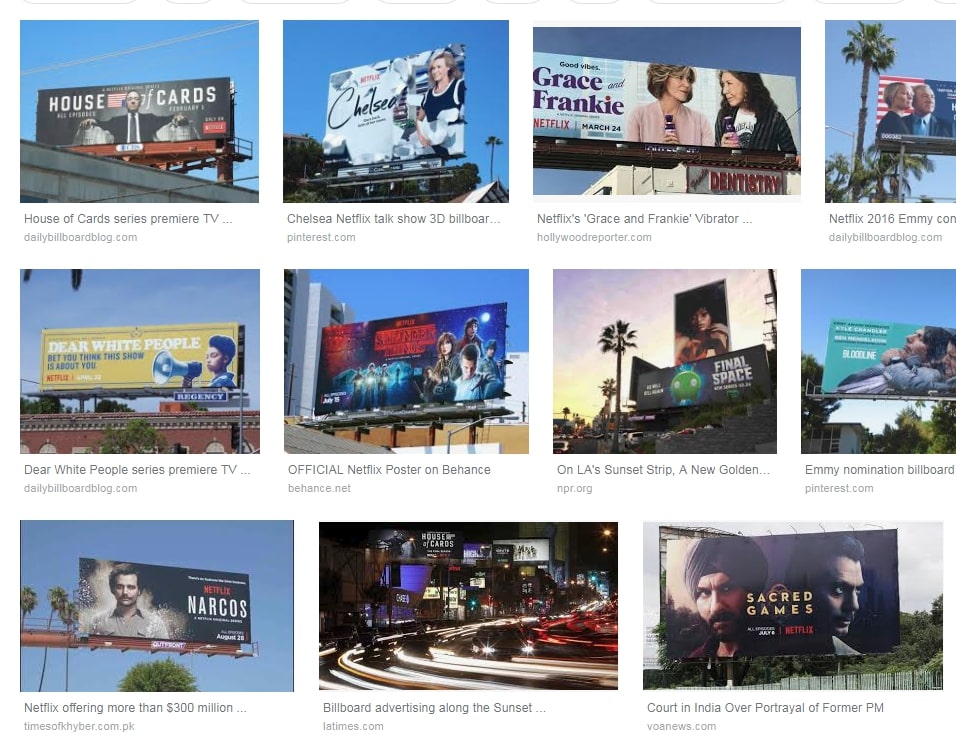
Investment decisions are made based on metrics such as ROI, NPV, and IRR. On the other hand, marketing decisions are rarely made based on any metric. One of the reasons is because there is a disconnect between old school marketers vs digital marketers.
- Old school marketers (TV, newspaper, and radio) don’t understand digital.
- Digital marketers don’t understand TV, radio, and OOH advertising.
Hence, they just stick to what they know. However, the organisations with marketers who understand this will be able to capitalise on this trend.
Look at Amazon.
Every retailer’s worst nightmare has been opening up bookstores since 2015 and they have a total of 12 stores now (based on their Q3 2017 report) and they generate almost zero profit from these bookstores.
So why do they keep opening up bookstores eventhough they generate almost no profit from them?
If you look at it from an advertisement point-of-view, advertising their books on Google would cost a fortune. Using a retail store as an advertisement is an overlooked strategy by most organisations and marketers.
Amazon CFO Brian T. Olsavsky told investors that the stores represent another way to reach customers. Amazon isn’t using its stores to generate sales but as a marketing channel to reach customers. He also said the stores are also a great way to showcase Amazon’s hardware devices.
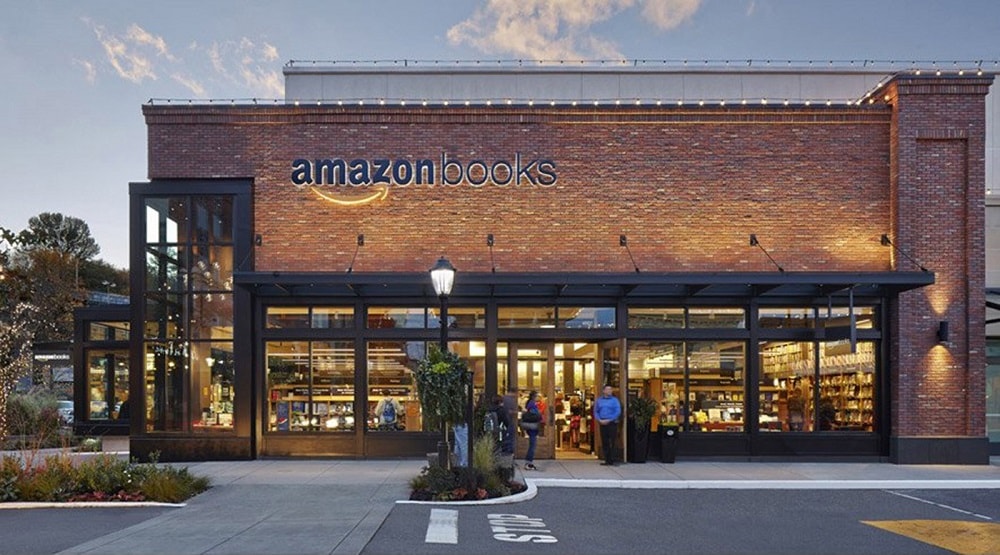
Digital marketing will completely takeover OOH advertising when…
Everyone stops going out.
There is a reason why they call it OOH advertising or out-of-home advertising.
If I’m going to place my bets, I would place a huge bet on us still getting out of our homes which means OOH advertising will continue to exist for decades to come.
Right now, digital marketing continues to dominate and as more advertisers allocate their budget towards digital marketing, the costs will continue to increase. This will make traditional marketing channels more attractive and based on the report shown above by Nielsen and Wells Fargo, the costs for radio and OOH advertisements have already become very attractive.
Summary
- OOH advertising will continue to exist unless we stop going out of our homes.
- Organisations don’t allocate all their marketing budget to one marketing channel.
- More advertisers on digital = Higher CPC and CPM = Lower ROI.
- As digital marketing becomes more expensive, more budget will flow back to traditional marketing channels like OOH.